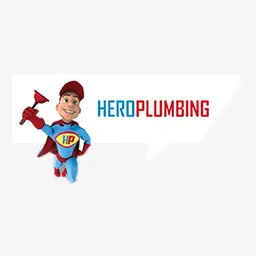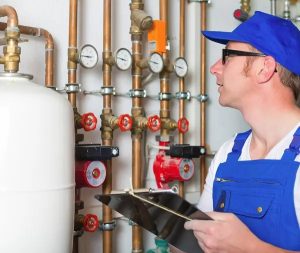Table Of Contents
Switching Out Old Taps For Mixer Taps
Mixer taps can be used in various rooms of the house and come in many different styles, finishes, and sizes. If you have two different fixtures in one place like for kitchen sinks and want to control both with one knob, a mixer tap is the easiest way to do it. This article aims to provide you with the knowledge you need on how to properly remove your separate hot and cold water taps and replace them with a mixer tap.
What Is A Mixer Tap?
The best way to start is to gain a better understanding of what a mixer tap or faucet is and does. A mixer tap simultaneously blends hot and cold water through one spout. The user can adjust the temperature with one lever. This differs from other designs that typically have two independent taps with their own spouts for hot and cold water.
They are available for various bathroom applications, including basin, bath, and bidet mixer taps. Mixer taps for the kitchen are also available. They are available in either modern or classic forms with matching handles, whether via lever or twist tap heads, such as crosshead designs.
Changing Hot And Cold Water Taps To A Mixer Tap
You must follow the steps below to change two separate taps supplying hot and cold water into a single mixer tap. Please note that some steps may slightly differ. This is because of the nature of your installation or the type of taps you are working with. However, generally, the concept remains the same.
Step One: Shut off the water supply
You must identify the pipe supply system’s isolating valve to shut off the water supply. It can be found attached to the outputs of hoses. Turn the valve a quarter turn clockwise to shut off the water.
Check whether the water has been properly turned off by letting it flow. If your system lacks individual isolation valves, shut off the water supply at the main stopcock. You can proceed to step two when you are sure that no water is circulating.
Step Two: Disassemble existing taps
This differs depending on where you are removing the tap.
Kitchen sink taps
Disconnect your taps from the main water supply. There are two kinds of water pipe connections: flexible and standard. Using an open-handed spanner, unscrew the screw that links the couplings to the pipe if you have a conventional hose system. There may be some leakage after disconnecting the faucet.
For a flexible pipe connection, you must undo the nuts where they link to the primary pipe connections or the isolating valves. Use a pair of adjustable pliers to hold the connector or valve in place throughout this process. Note that it may be difficult to release the nuts since they may stiffen over time.
Take out the main taps. Next, remove the nut that holds the fixture to the surface. Grab the faucet and install it properly. Ensure that it does not spin when the nut is being unscrewed. The objective is to remove it from the stud so that you may detach the tap and flexible hoses.
Extra caution is required while removing these hoses, especially if they are made of stainless steel. You want to avoid cutting yourself on a sharp, pointed edge. After you’ve removed everything, clean the open mains pipe connections under the sink of any nasty residue or build up.
Bath taps
Remove the flexible pipe connections. If your bathtub has a panel, you may need to remove it to access the flexible pipe connectors that link your bathtub faucets to the internal plumbing. The flexible pipe couplings should be visible beneath the bathtub. These can be disconnected with an adjustable wrench.
Remove the faucet by loosening the nuts and washers beneath the faucet using an adjustable wrench. You should readily remove the old faucet. Clean the area surrounding the tap hole before installing your new taps. It is usual for dirt and grime to accumulate in this area.
Shower taps
Begin with the shower and remove it by turning it anticlockwise. Make sure you remove every part of the shower. Switch off the hot and cold water taps, respectively. While removing the taps, make sure you remove all the accessories, including washers, extensions, spindles, and adapters.
Use a long-nose plier to remove debris, dirt, sand particles, and other components that may be stuck inside. Place a finger into the now open outlet and ensure nothing is left inside.
Step Three: Connect the mixer tap
Kitchen mixers
To install a mixer tap on a kitchen sink, do the following:
- Check the mixer to ensure it is watertight. Put the seal that keeps water out over the two hoses.
- Place the seal so that it fits securely on the base of the tap and hold it there.
- Put the hoses through the mixer hole in the sink.
- Put the mixer in the sink so that the watertight seal is against the sink. This is how you should hold the mixer.
- Use the hoses to hold the mixer tightly until it is connected.
- Place the stabilisation ring over the hoses and then slide it along the threaded rod. In the same way, put the tightening seal in place and then the tightening nut. Tighten the nut as much as you can by hand.
- Let go of the mixer, which is now held in place, and check that it is facing the right way. If you need to, change it.
- Hold the mixer and tighten the nut without forcing it with a 13 mm open-end wrench.
Bath and shower mixers
Installing a mixer tap in a bath area or shower involves two main steps; installing crank connectors and then the mixer tap. You will need a component called a crank connector to replace two separate taps with a mixer. A crank connector links each outlet for cold and hot water and serves as the supply for the mixer. Do the following to install the crank connectors in the two outlets:
- Take one of the crank connectors and remove the washer. Set it aside.
- Use the hex key to remove the inner cylinder of the crank connector by turning it clockwise. This will loosen the crank connector and bring out the deeper extension.
- Use the hex key to turn the deeper extension until you see the third black line. Insert the washer that you removed into the deeper extension, and then put the deep extension back into the crank connector and screw it clockwise until it is tight enough.
- Repeat the process mentioned previously for the other crank connector.
- Each of the crank connectors comes with a flange cover. Attach each of the flange covers to each of the crank connectors.
- Use a plumbing tap to go around the thread of each of the crank connectors.
- Install the crank connector into the tap outlets by screwing it into the hot and cold water taps.
NB: Make sure that the two crank connectors are positioned appropriately to hold the mixer.
Do the following to install a mixer:
- Take the mixer tap and insert the rubber washer into the mixer’s nut. Screw the mixer to the crank connector on the wall and then gently tighten the joint between both with a spanner.
- Using a hex key, tighten the inner cylinders by turning them clockwise until you reach the very end.
- Take the cover cap for the crank connector and use a flat-head screwdriver to cover the crank connector’s holes.
- Connect your shower hose on the side of the mixer tap.
Benefits Of A Mixer Tap
Cost-effectiveness
Mixer taps are typically equipped with a flow restrictor to prevent simultaneous overuse of the hot and cold water pipes. Practically speaking, you will likely use less hot water when combined into a single flow, which benefits your energy bills and the environment.
Ease of use
You can only get hot water or cold water with two separate taps. It is impossible to change the hot water’s temperature beyond what you set on your heater, but you can simultaneously mix hot and cold water to different degrees in the tub or sink.
A mixer tap allows you to change how hot or cold the water is as it comes out of the tap. This makes it far simpler to set and control the temperature of the water coming out of the tap, whether you’re taking a bath, washing your hands, or shaving.
Aesthetics
Many people like the look of a mixer tap better than two separate taps for hot and cold water. There are copious different kinds of mixer taps to choose from. They can have straight, modern lines or be curved like a classic arch. Most mixer taps are designed with stainless steel, complementing other bathroom accessories, including towel holders.
Even the handles can be different. There are traditional handles that turn and levers that you lift up and down to control flow. If you want a mixer tap that is mounted on the wall, you can get one quite quickly.
Convenience
A mixer’s additional control is quite convenient, particularly when running a bath. It is common practice to simultaneously run both taps, typically with the hot water tap open more than the cold where you have separate taps. However, it can be difficult to strike the right balance, and many individuals find that they must either stand guard or keep checking as water flows.
Running hot water and then adding cold water is common, but it can result in a scalding bath, which is especially hazardous if you have children. Setting the optimal temperature with a mixer tap allows you to confidently leave the bath to run on its own. Don’t completely forget about it, or you could end up dealing with a flood!
Versatility
You can use mixer taps on both the bath and the sink or basin in the bathroom. You could even mix and match with a mixer tap on the bath and separate hot and cold taps on the basin.
You can easily switch between flow from your taps and a shower attachment if you add a shower mixer to a set of mixer taps. This can be held in your hand or attached to the wall to make a shower bath. It is beneficial when there isn’t enough room for a separate shower and bath.
How Does A Mixer Tap Work?
The interior of the tap units comprises tiny holes, often known as valves or butterflies (due to their shape). Upon activating the faucet, these holes shift from a closed state to a partly or fully open position, depending on the desired flow rate and temperature.
Switch the cold handle off if you only want hot water. The valve is closed in this position, while the hot water handle will be partially or fully open. This makes mixer taps sensitive to the user’s desired temperature, which is why they are ideal for family homes.
How does a bath-shower mixer tap work?
A bath shower mixer tap operates similarly to other mixer taps. However, while freestanding bath mixer taps are available, similar to those in your sink or kitchen, a bath shower mixer is coupled to a shower handset.
You may utilise a diverter valve or switch to switch between the taps and the shower. The shower handset may be wall-mounted or deck-mounted on a shower base for simple storage and accessibility.
Get A Plumber To Install Your Mixer Tap
This article has provided a detailed DIY process of how you can convert your single hot and cold water taps into mixer taps. Nobody wants to deal with that hurdle of dealing with two different tap controls for hot and cold water. We all want to be able to get water out of the same tap using one control.
However, as you must have seen, installing a mixer tap can be a little bit complicated and may need the services of a plumber to correctly fix the mixer tap for you. So, if you are unsure you’ll do a good job, it is better to talk to a plumber to help remove those uncomfortable hot and cold water taps and replace them with a mixer.











